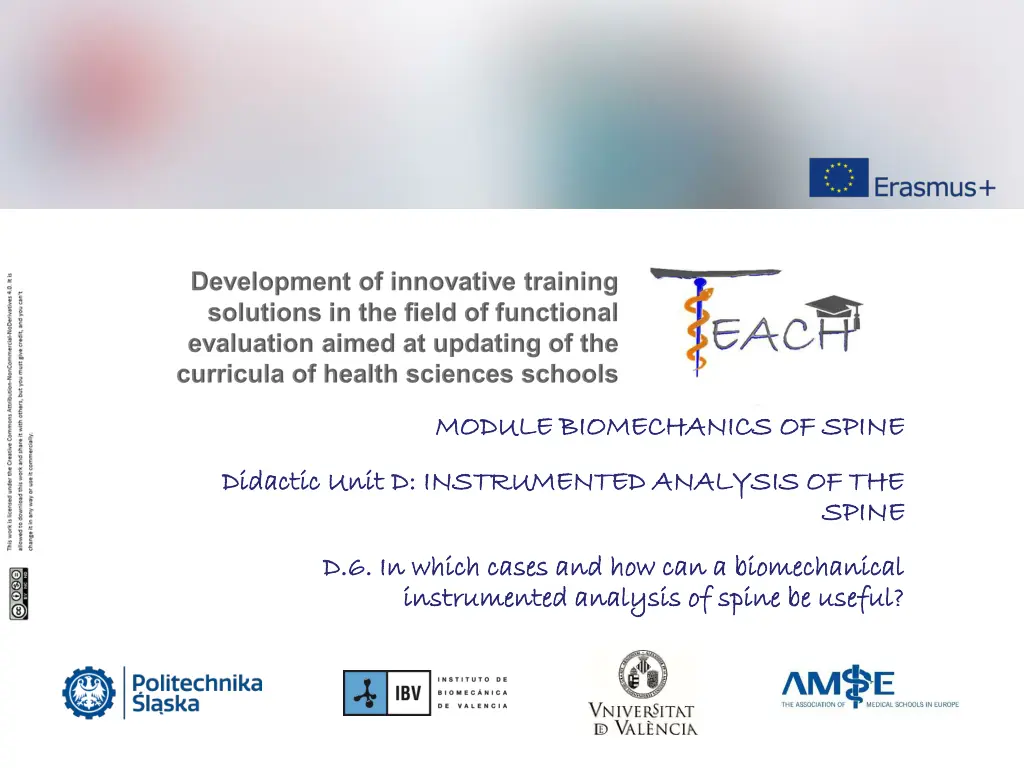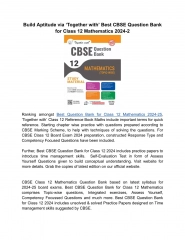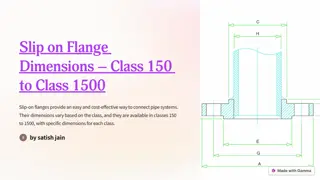
Biomechanical Analysis of Spine: Clinical Applications & Benefits
Explore the utility of biomechanical instrumental analysis in assessing spinal pathologies, providing objective data for treatment decisions and monitoring progress in clinical settings.
Download Presentation

Please find below an Image/Link to download the presentation.
The content on the website is provided AS IS for your information and personal use only. It may not be sold, licensed, or shared on other websites without obtaining consent from the author. If you encounter any issues during the download, it is possible that the publisher has removed the file from their server.
You are allowed to download the files provided on this website for personal or commercial use, subject to the condition that they are used lawfully. All files are the property of their respective owners.
The content on the website is provided AS IS for your information and personal use only. It may not be sold, licensed, or shared on other websites without obtaining consent from the author.
E N D
Presentation Transcript
MODULE BIOMECHANICS OF SPINE MODULE BIOMECHANICS OF SPINE Didactic Unit D: INSTRUMENTED ANALYSIS OF THE Didactic Unit D: INSTRUMENTED ANALYSIS OF THE SPINE SPINE D.6. In which cases and how can a biomechanical D.6. In which cases and how can a biomechanical instrumented analysis of spine be useful? instrumented analysis of spine be useful?
OBJECTIVES To show different uses of biomechanical assessment techniques in the clinical field of spinal pathology assessment. To analyse through scientific studies the usefulness of the biomechanical assessment of the spine. To highlight some aspects of interest in the broad area of assessing using biomechanical analysis tests.
CONTENTS Clinical applications of biomechanical tests. General information. Usefulness of the functional biomechanical assessment of the spine. Example of a clinical case. Progress monitoring. Key ideas.
Remember Functional assessment is the method used to measure a person's limitations when performing different tasks. Functional assessment complements the diagnosis of pathologies that affect movement within the clinical evaluation process by using instrumental techniques: Anamnesis Physical examination Diagnostic tests Biomechanical assessment tests A biomechanical test is a test that assesses mechanical or physiological aspects related to human motor function such as muscle strength, movement, coordination, balance, and dynamic muscle activation patterns.
Remember The biomechanical tests used to assess the spine are: Kinematic tests: they analyse the characteristics of movement Kinetic tests: they study the forces that generate movement Dynamometry: it studies forces Surface electromyography: it studies the patterns of muscle activity
ACTIVITY - DISCUSSION In what situations is it useful to assess a functional disorder using biomechanical instrumental techniques in a person with spinal pathology?
Why are these tests useful in the clinical setting? When are they recommended? They are useful because they provide objective data about movement in relation to the pathology of the person assessed. This objective information helps in the decision-making process regarding: Modifications to the treatment. Finishing a treatment due to improvement or healing. They allow us to monitor the patient s progress. They help support the end of the clinical process and therefore the return to the patient s daily activities. They make it possible to assess sequelae after an injury. They help make decisions on the person s return to work.
Clinical case 1. Progress monitoring 26-year-old injured woman who suffered a traffic accident on 1 June 2013. She was driving a motorcycle which hit a car. Ten days later, she went to a rehabilitation clinic for the first time. She performed 5 rehabilitation sessions of the cervical spine. A functional test of biomechanical assessment was performed in the first and the last session. The final result of these control assessments was as follows:
Clinical case 1. Progress monitoring The final result of these assessments to monitor the cervical function was as follows: 99 98 100 INDICE DE NORMALIDAD (%) 90 80 70 60 50 40 INICIAL FINAL SESI N DE REHABILITACI N Values below 90% are considered functionally altered in the normality index (pink-shaded stripe). Conclusion: The progress monitoring shows that the function has been normal and stable from the beginning of the rehabilitation.
Clinical case 2. Progress monitoring 27-year-old injured woman who suffered a traffic accident on 22 May 2013. She was driving a car that caused a rear-end collision. On 4 June, she went to the rehabilitation clinic for the first time. Due to the symptoms initially reported by the woman, the doctor ordered a functional assessment of the cervical spine using the biomechanical technique of photogrammetry. After the first assessment session, progress monitoring assessments were performed after treatment session 5 and 9, and a last one after completing the 15 sessions.
Clinical case. Progress monitoring After the first assessment session, progress monitoring assessments were performed after treatment session 5 and 9, and a last one after completing the 15 sessions. VALORACI N FINAL (14 sesi n RHB) 5asesi n rehabilitaci n 9asesi n rehabilitaci n VALORACI N INICIAL CERVICAL
Clinical case. Progress monitoring The final result of these assessments to monitor the cervical function was as follows: 94 100 87 INDICE DE NORMALIDAD (%) 86 90 80 70 70 60 50 40 30 20 10 0 INICIAL 5 9 FINAL SESIONES DE REHABILITACI N Values below 90% are considered functionally altered in the normality index (pink-shaded stripe). Conclusion: The progress monitoring shows that the function of cervical spine mobility improved and normalised in the final assessment session with 94% of normality.
ACTIVITY - READING Select ONE of the following works and do a critical reading analysing the usefulness of biomechanical tests: 1. Baydal-Bertomeu, J. M., Page, . F., Belda-Lois, J. M., Garrido-Ja n, D., & Prat, J. M. (2011). Neck motion patterns in whiplash-associated disorders: quantifying variability and spontaneity of movement. Clinical biomechanics, 26(1), 29-34. 2. L pez-Pascual, J., Peydro-de-Moya, M. F., Garrido-Ja n, J. D., Baus - Peris, R., & Villadeamigo-Panch n, M. J. (2009). An lisis del uso de herramientas de valoraci n funcional de las dolencias lumbares en el mbito laboral. Rehabilitaci n, 43(1), 16-23. 3. Broseta, M. J. V., Bosch, I. B., de Moya, F. P., & Corresa, S. P. (2017). Is kinematic analysis useful as a clinical test during whiplash associated disorders recovery? A clinical study. Gait & Posture, 57, 358.
ACTIVITY READING QUESTIONS What is the objective of the work? What biomechanical technique or test was used? What is the study population? Can you highlight any results obtained? What are your conclusions about the usefulness that the biomechanical information had?
Key ideas The biomechanical assessment of the spine makes it possible to: Objectivise the existence of an alteration by comparing with L normalised databases of healthy population. Plan a treatment based on the condition objectivised and assess its benefits. Monitor the progress of the patient. Establish the normalisation or stabilisation of the pathological process. Assess the functional limitations resulting from an injury (support in the assessment of sequelae). Help detect malingering behaviours.
Key ideas They involve significant technological resources, as well as trained staff and time commitment. A strict protocol must be followed to maintain the reliability and reproducibility of the test and then compare with databases. There are various types of tests that provide different information. A biomechanical assessment test is not a diagnostic test.
Key ideas A biomechanical assessment test completes the information about the functional status of an injury. It is not a substitute for clinical examination. It provides objective information in patients with subjective pain symptoms. It makes it possible to monitor the patient s progress and to determine when the treatment should end.
The European Commission's support for the production of this publication does not constitute an endorsement of the contents, which reflect the views only of the authors, and the Commission cannot be held responsible for any use which may be made of the information contained therein.






















